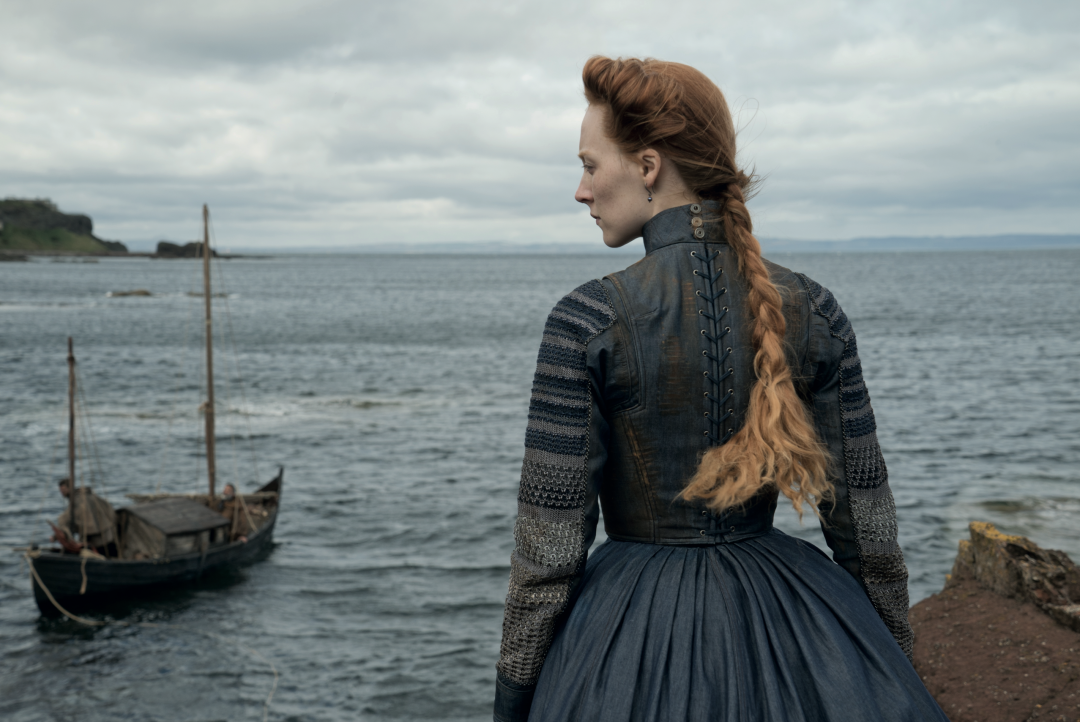
A visionary director collaborates with an award winning costumer capable of interpreting the language of fashion with chutzpah and crystalline clarity. Together they render a 400 year old legend fresh and relevant for modern audiences of the #metoo age. By Janice Breen Burns. (First published The Age/Sydney Morning Herald, Fairfax Media.)

For 400-odd years they’ve been cast as the flinty bitch and bed-hopping slut in a catfight-to-the-death for control of a kingdom rent by religious and political conflict. Elizabeth 1 and Mary Stuart were royal cousins whose rivalry became the stuff of legend, such that more than 400 years later, filmmakers are still finding riches in the royal rancour.
Josie Rourke‘s Mary Queen of Scots extracts its female leads from myth and history. Starring Margot Robbie as Elizabeth I and Saoirse (pronounced “Sur-Sha”) Ronan as Mary Stuart, the film tenderly fleshes them out enough to chime with real women today.
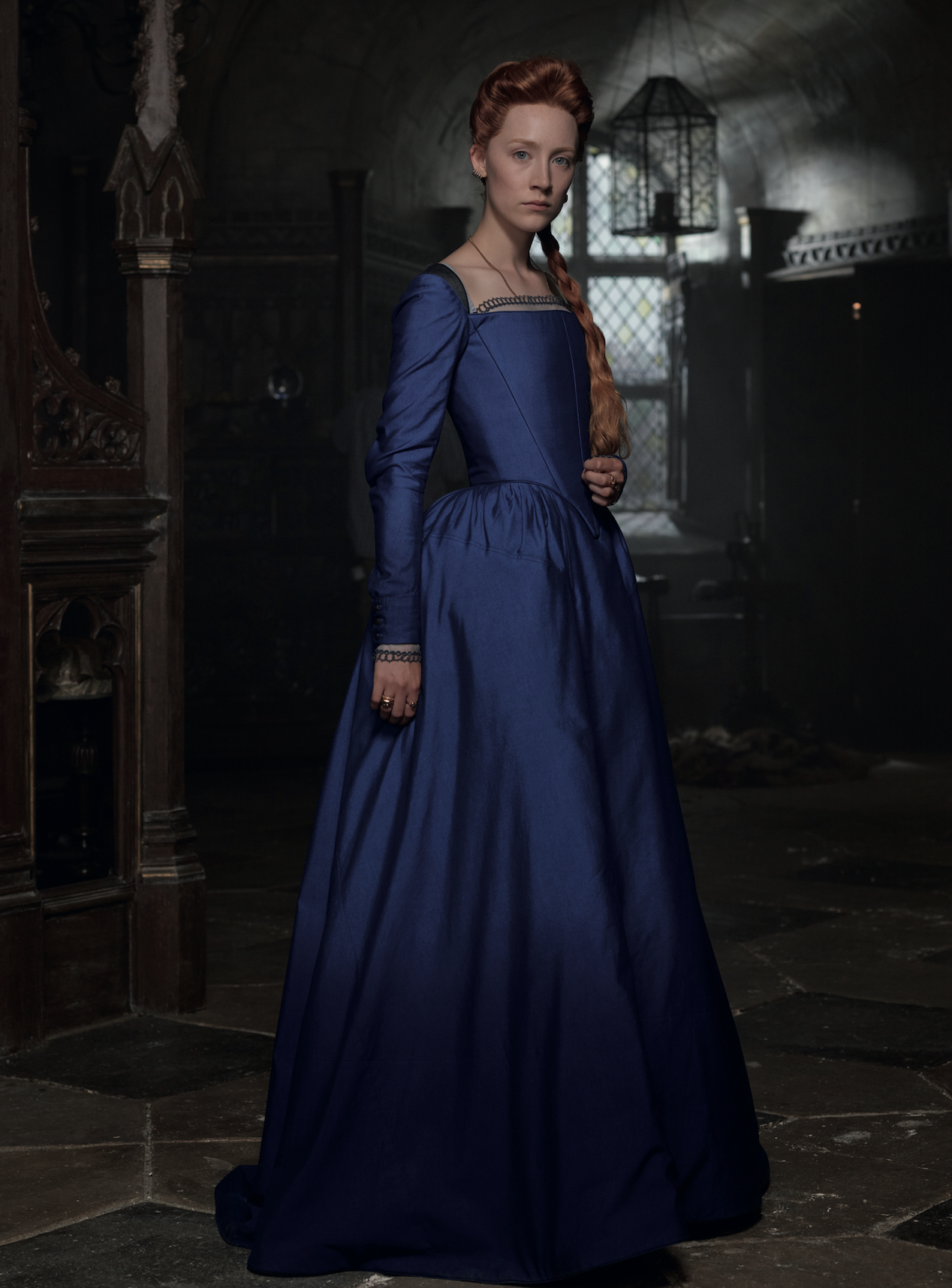
“That’s what I wanted most in the telling of this story; to show all aspects of what it’s like to be a woman,” Rourke says. “To show all aspects of all women’s experiences, all women’s bodies, and that fight for control that’s still real.”
Critical flack for the film’s rejigging of history (including a face-to-face meeting of the queens that never happened) was inevitable. But Rourke and co-producer Tim Bevan (both Elizabeth films starring Cate Blanchett were also his) are unapologetic. “[The screenplay] took us away from exact detail,” Bevan says, “but it captured an emotional truth and atmosphere.”
Rourke is more blunt: “Mary’s been slut-shamed for the past 400 or so years,” she says. “I think she’s been done a bit of injustice by history.”
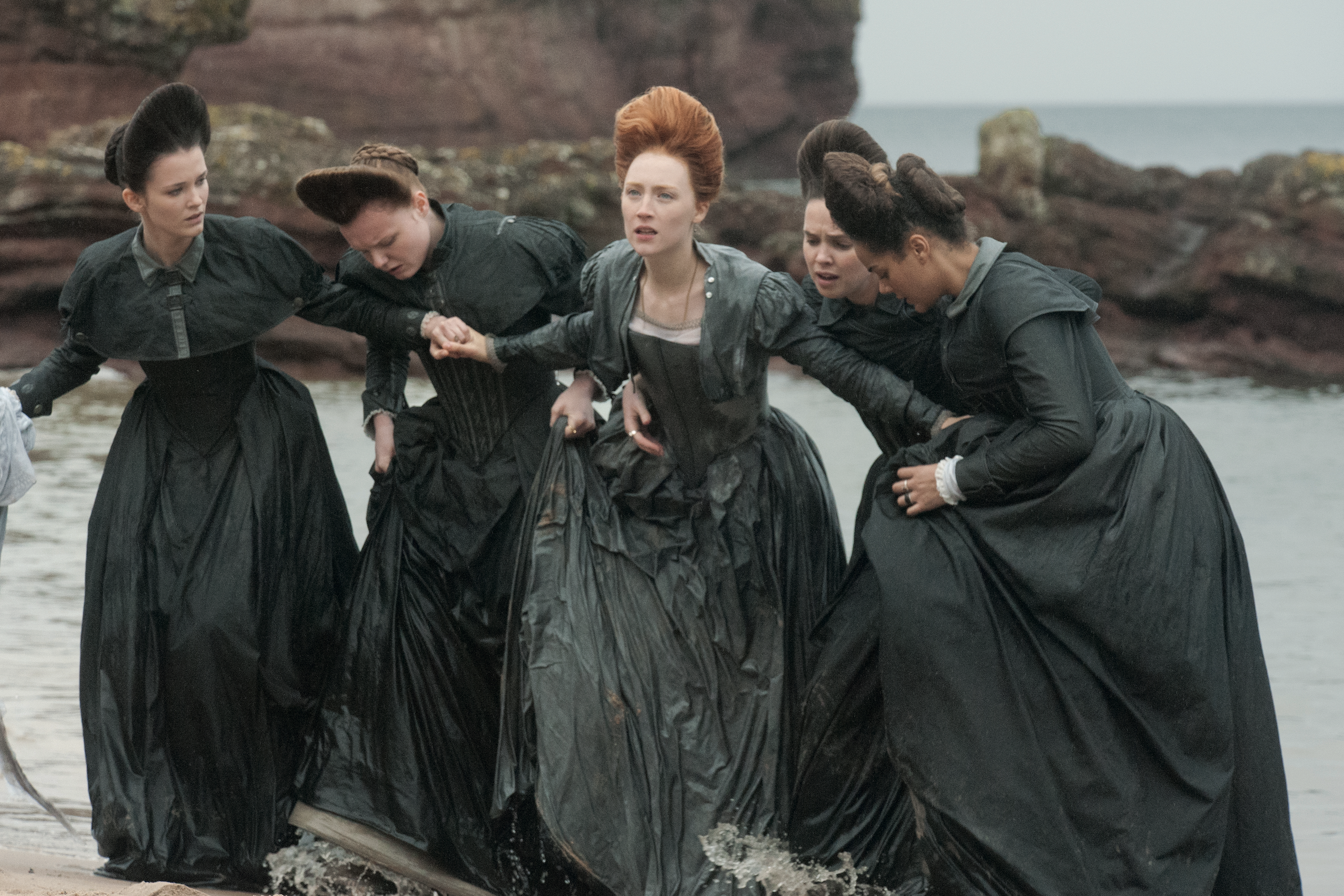
Rourke reckons the film might help right a wrong that’s embedded in history’s mechanics, particularly its recording by men about women.
“Mary was framed as this kind of femme fatale by Cecil [Lord Burghley, adviser to Elizabeth 1, played by Guy Pearce],” Rourke says. “It was a systematic campaign; letters, pamphlets, fake news as we’d call it today.”
Cecil’s slut tag stuck, as did Elizabeth’s “Iron Queen” stamp. But the film adds delicate dimensions of vulnerability, vanity, self-doubt and naivete to their documented surges of political strength and resolve.
Much of the intuitive material about them was spurred by a new biography of Mary Stuart, My Heart Is My Own, by forensic historian John Guy. “He put aside this 400 years of writing about Mary as someone who was incompetent because she couldn’t control her emotions or sexual appetite,” Rourke observes, “and he basically said ‘What is actually in the archives? What actually happened?’.” Or, what was most likely to have happened, given both young queens reigned in the same social soup; despised for their gender and manipulated by power-mongering courtiers.
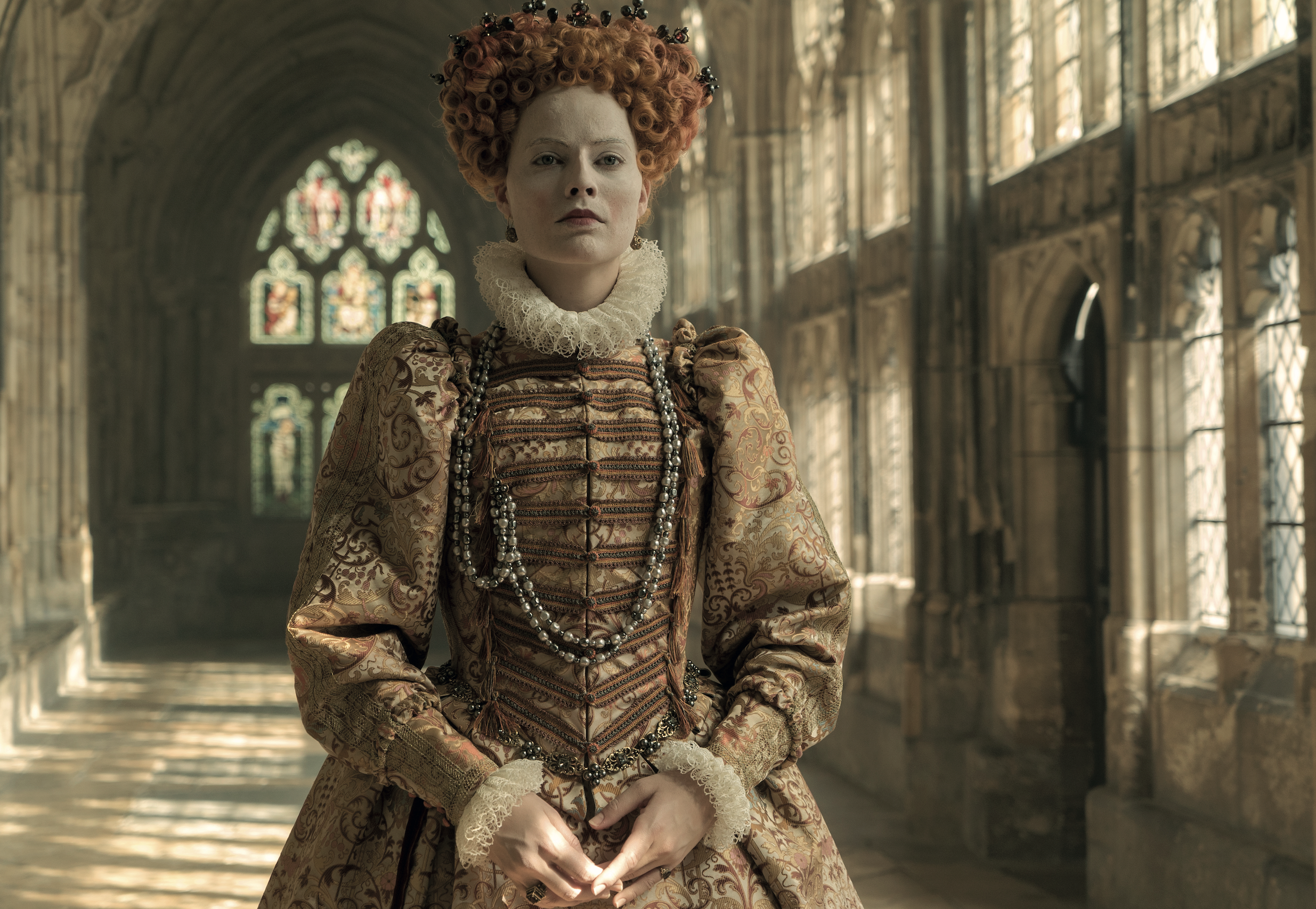
“Imagine starting a new job like that,” Rourke says. “Being handed this ton of responsibility, but you’re surrounded by people who doubt your abilities and even your right to be there. They want to control who you marry. They want you to produce a male heir. And, in the end, that’s your power and your triumph but, when you do [as Mary did, giving birth to a son who eventually ruled England and Scotland as James 1], there’s always going to be some uncle or brother around who goes: ‘Well that’s incredibly useful; I wonder if we need you any more, queen? Maybe I can just rule on behalf of your son…’.”
Women’s power was woefully limited and tied to their physical appearance and value as brides, mothers and whores in the 16th century. Among Rourke’s key allies in conveying this for the #MeToo era were hair and make-up designer Jenny Shircore and costume designer Alexandra Byrne.
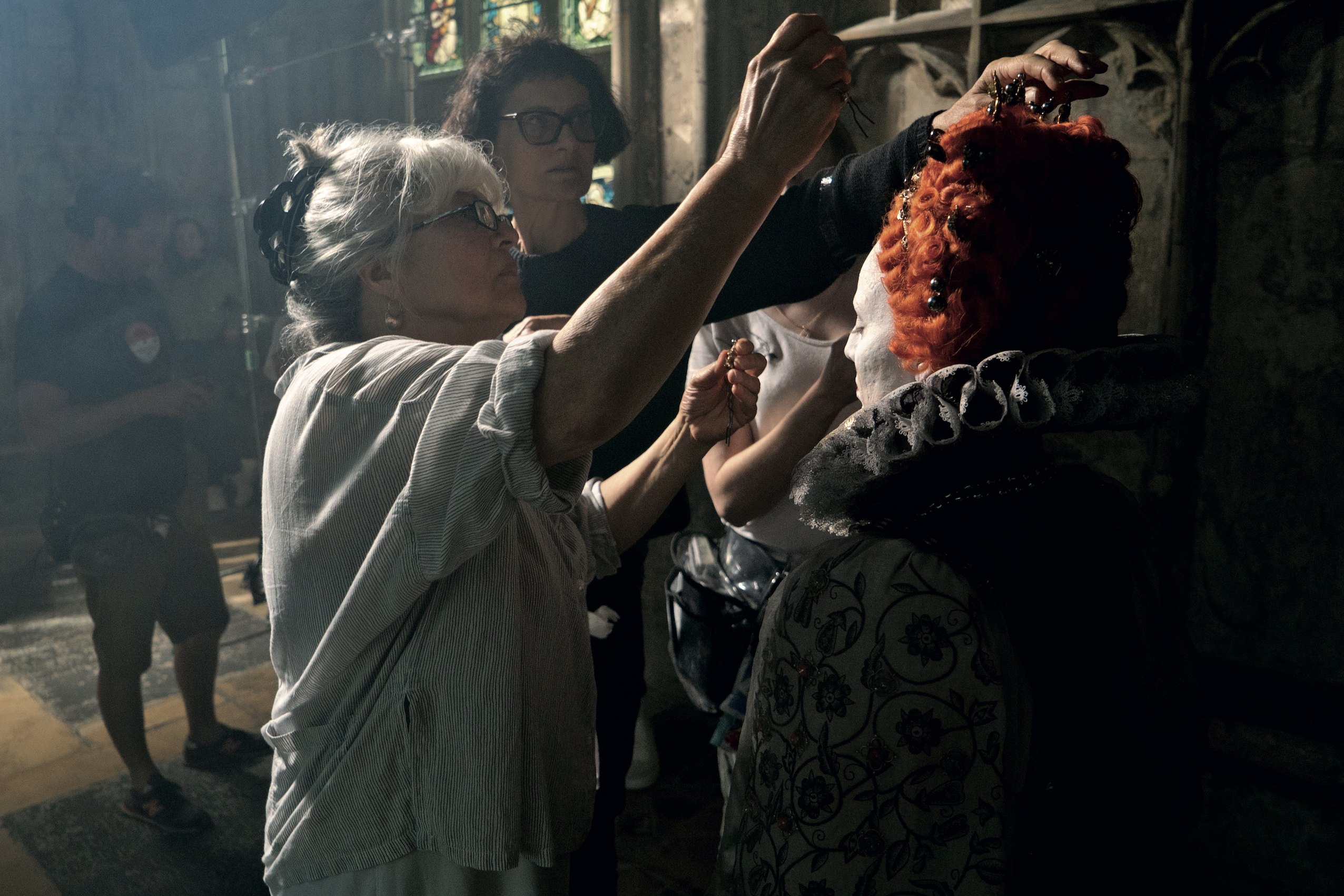
“I knew when I first read the story we wouldn’t be making a historical documentary here,” Byrne says. “And I didn’t want to do a, ‘here comes another queen in another frock’ either.”
This rendering of 16th-century fashion would be different, she decided, but not crazily different. Byrne used her extensive knowledge of the era’s authentic fashions as a scaffold for the new costumes she describes as “engineered to express how [Elizabeth and Mary] ruled and maintained their power in a world of predatory men”.
Elizabeth’s elaborate, multi-level carapaces of heavy silk brocades and gauzy laces were relatively easy to sculpt as the peacockily political crowd-pleasers they were meant to be, from the typical toolbox of figure-altering farthingales, corsets, crinolines and other boned and padded fashion contraptions of the time. Mary’s, on the other hand, had to be simpler, more subtly nuanced, more Scottish, more modern.
“Elizabeth was incredibly aware of the power of her appearance,” Byrne says. “She actually aimed to replace the iconography of the Virgin Mary.”
In the earliest years of her “virgin queen” persona, Byrne envisions Elizabeth’s intention complicated by the vanity of a typical young woman. “She’s like the girl with the Net-a-Porter account, using everything she can buy to create the look,” Byrne says, laughing.
Byrne introduces elegant glints of copper and bronze into Elizabeth’s fragile funnel collars as the young queen might have done herself, to enhance her red hair. But then she bleeds all colour and joy from the queen’s wardrobe as a disfiguring bout of small-pox thins her hair, pocks her complexion and guts her self-esteem.
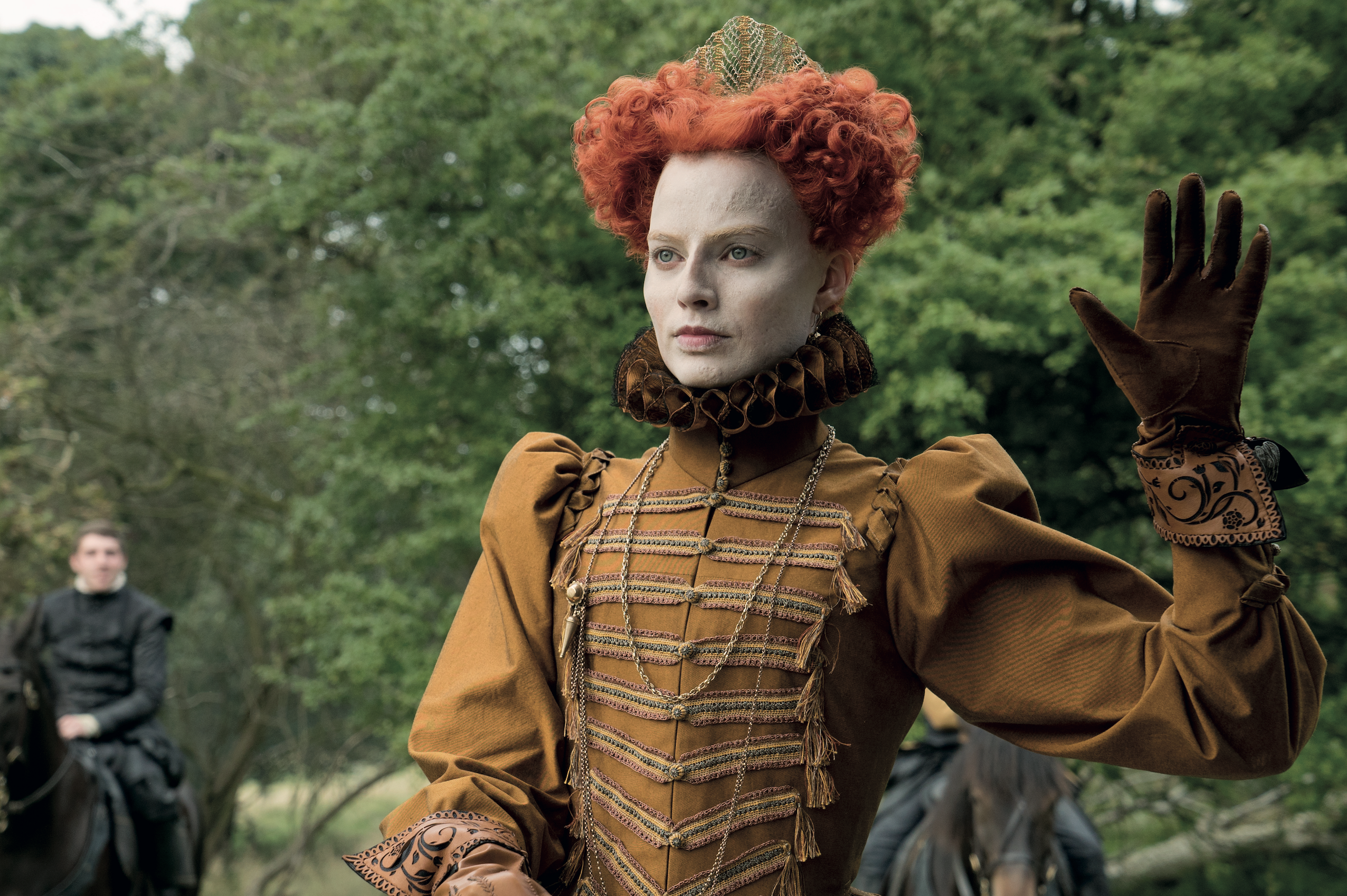
By the film’s crescendo, shot as the queens move evocatively towards each other through drifting white veils of freshly washed laundry, Elizabeth’s shattered ego is heartbreakingly evident.
Byrne chose a striking hunting ensemble for her to wear, but confuses its impact with extra, intensely self-conscious, fashion choices: a clownish red wig to cover her thinned and ratty hair, and make-up trowelled on, pale and thick as Spakfilla, to cover her pock scars.
Any woman who has ever been tempted to paper over her self-doubts with fashion might recognise the OTT, mutton-as-lamb result. And in these cringlingly feminine stakes at least, Mary’s messy hair, battle-spattered dress and careless disregard for her own youth and beauty, effectively “wins”.
Byrne’s trick, to infuse a relatable sense of modernity into costumes including Mary’s and the male characters, was to cut most of them from acres of indigo denim. “We have this association with denim in our everyday lives that gave me that juxtaposition of ancient and modern I needed.”

Rivets, stitching and patinas of sweat and mud only enhanced the costumes’ contemporary cool and in clusters, they cast an oddly satisfying blue across the film’s moody chiarascuro.
Best of all though, was denim’s boon to Byrne’s male costumes, “which had to be sexy … with a swagger”. Story lines including Mary’s flirtation with future husband Lord Darnley (played by Jack Lowden), swung on how convincingly hot he was to modern audiences, not likely in the swollen breeches, fancy doublets and tights of the time.
Byrne experimented with leather and denim and solved the problem of Elizabethan sexlessness with high-waisted crotch-centric pants and low-slung western belts and, voila, she recalls triumphantly; “We had our swagger!”.
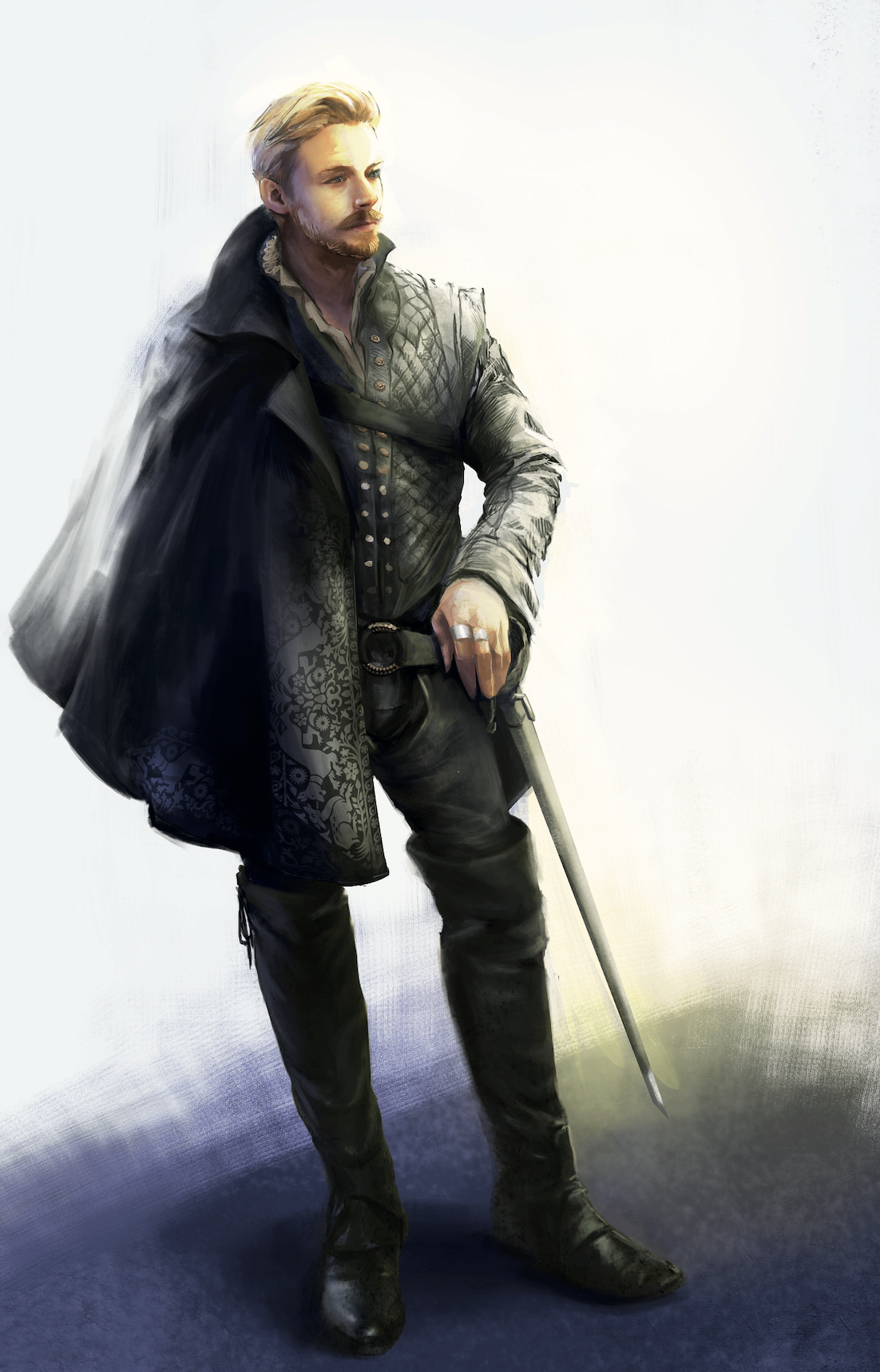
In any final analysis of Byrne’s intuitive reimagining of Mary, however, her simplest costume design is probably the most evocative. In a scene that could only be described as a rape, but one that Mary orchestrates herself in order to get pregnant, Ronan strips down to a rough linen chemise.
“She’s been at the battle, she’s dirty, she’s sweated into that chemise,” Byrne says. “It’s very much a garment that’s of her.” After the rape and Darnley’s departure, Ronan curls onto her royal bed, all pale girl legs, tangled hair and grubby chemise, but not as a victim. On the contrary, she knows the shocking limits of her power as a woman, and prays his sperm will take.
Mary Queen of Scots opens on January 17.



